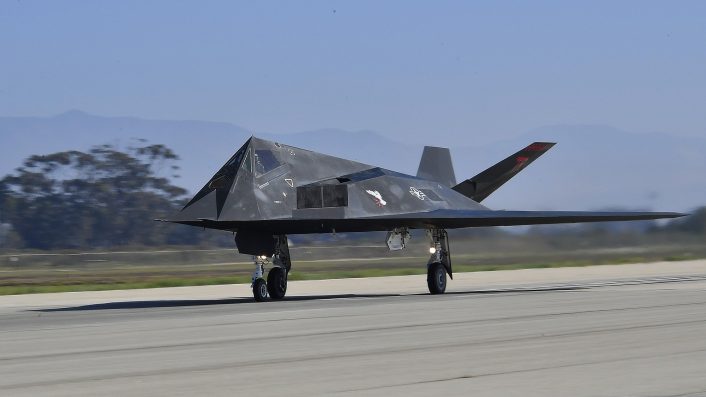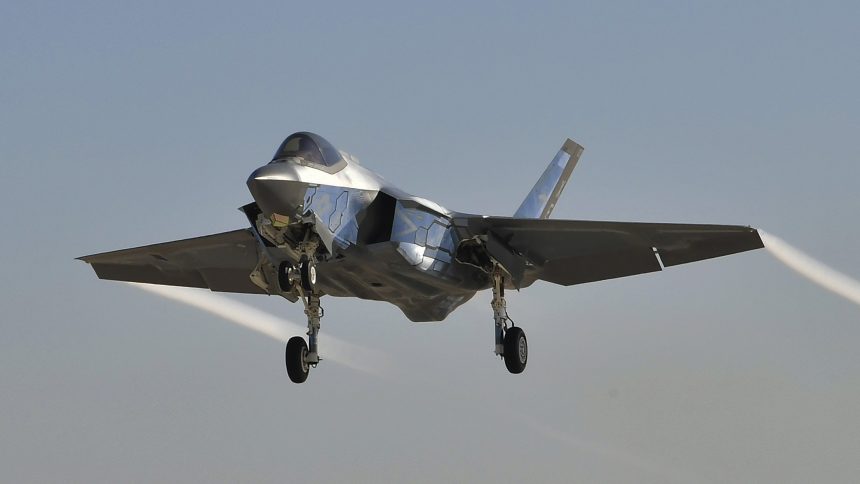The photos show two VX-9 F-35Cs with the mirror-like coating during testing at Naval Base Ventura County Point Mugu in 2022.
The U.S. Navy has released photos of two F-35Cs flying with a distinctive mirror-like coating, captured during operations at Naval Base Ventura County (NBVC) Point Mugu, California. However, there are discrepancies regarding the date the photos were taken: the details on the DVIDS network state they were captured on April 28, 2025, while the photos’ EXIF data indicate a date of August 30, 2022.
Discrepancies
The two aircraft are “old acquaintances,” as they appear to be the airframes BuNo 168733 XE-100 and BuNo 168842 XE-105, which indeed were already used in the past to test the new coatings. Earlier this year we reported about the latter, whose coating appeared to be quite degraded during testing in 2022 and was later returned to its standard livery in early 2023. The aircraft also had its Modex changed from XE-105 to XE-101.
The circumstances of the operations mentioned by the captions are unclear, as it is only mentioned that the “Vampires” of Air Test and Evaluation Squadron Nine (VX-9) were conducting unspecified flight and test operations onboard NBVC Point Mugu:
POINT MUGU, Calif. (2025) – F-35C assigned to the “Vampires” of Air Test and Evaluation Squadron Nine (VX-9) conducts flight and test operations onboard Naval Base Ventura County (NBVC) Point Mugu.
A mentioned earlier, while the photos’ details on DVIDS and the VIRIN (Visual Information Record Identification Number) naming mention Apr. 28, 2025, while the photos’ EXIF data mention Aug. 30, 2022. We know for certain that on that day in 202 the mirror F-35s were indeed opereating from Point Mugu.
In fact, as we reported, the F-35C XE-105 was photographed while arriving at NBVC Point Mugu to support multiple test events, as announced by the Navy. In an aircraft advisory to the local population, the service announced that approximatively 50 aircraft were to fly daily missions from Aug. 22, to Sep, 2, 2022.
Also, the same photographer already posted a foto of XE-105 with the mirror-like coating at Point Mugu on Aug. 22, 2022, taking off during Exercise Gray Flag. The photo was only released a year later, on Jul. 12, 2023.
However, a NOTAM (Notice to Airmen) was also issued on Apr. 27, 2025, a day before the date mentioned by DVIDS, and reserved a large part of airspace until Apr. 29. Such reservations are not uncommon, as the area is often used to host multiple exercises for both training and testing purposes. The testing, judging by the photos released in the same gallery, also included F/A-18 Super Hornets, EA-18 Growlers and notably at least one F-117 Nighthawk.
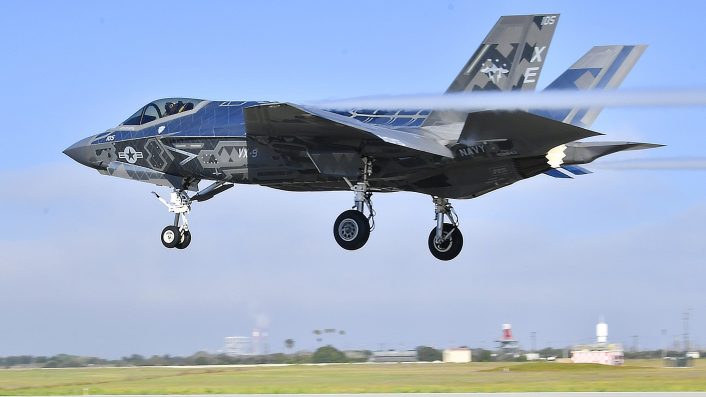
Mirror-like coating
The coatings applied on the two F-35Cs appear similar to the ones spotted in the past. Once again, the coating was applied to not interfere with access panels, weapon bays, sensor and antenna areas, landing gear doors and so on.
Also, it appears that this coating was applied over the standard grey livery of the F-35C and they appearance changes depending on the angle on observation. The tiles have different dimensions and shapes, with some areas showing larger diamond-shaped tiles, while other area have smaller diamond or triangle-shaped tiles.
The layout of the coating is similar to what was seen in the past on the F-22, with what appear to be small, mirror-like tiles that have been extensively applied on the nose section, weapons bay doors, fuselage and also inner and outer face of the twin tails.
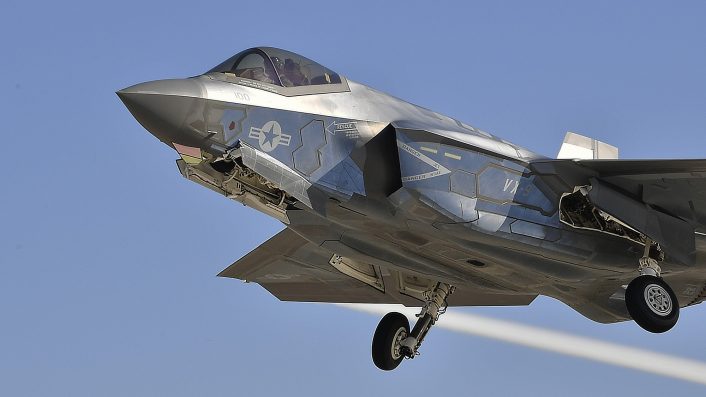
Many theories emerged about the origin of these coatings, but without any official confirmation. The most credited ones were testing activities related to counter-IRST (InfraRed Search & Track) technologies or targeting systems, some kind of radar absorbent material (RAM) replacement or a passive laser defense system.
When this was being tested on the F-22, a U.S. Air Force 422nd Test and Evaluation Squadron’s (TES) operational test pilot once mentioned in an interview that the coatings were experimental solutions which were being tested to see if they made it easier to maintain the sustainability and reliability of the aircraft. A similar reason was mentioned by an F-35C pilot, who said the coating “were to help with the salty air on the skin, but the tiles kept peeling off in flight.”
If the pilot’s explanation was correct, this would be in contrast with one the most likely theory that was shared so far, the reduction of the infrared (IR) signature of the aircraft. It would make sense for the tiles to peel off in flight if they were not just painted, but applied over the F-35’s paint with an adhesive, similarly to vinyl films which are often used to temporarily apply special markings or liveries to aircraft.
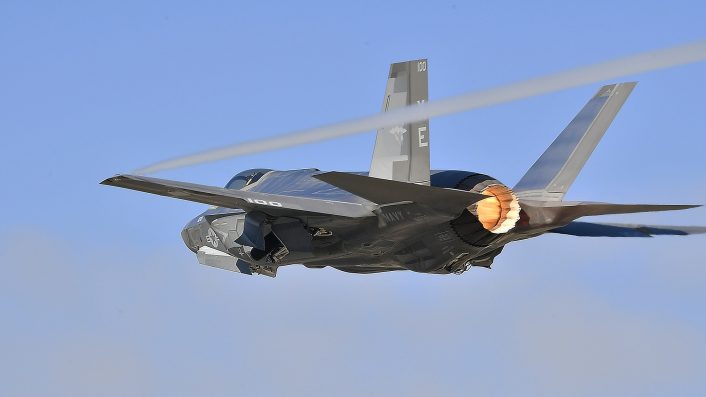
As for the salty air, another F-35C with a similar coating was tested aboard the USS Abraham Lincoln (CVN 72) aircraft carrier, while the one in the photo and another one were often spotted in the desert environments of Nellis AFB, Nevada, and Edwards AFB, California.
Previous sightings
Mirror-like coatings have now been spotted for some years during testing, with the first one being spotted on an F-22 Raptor in November 2021. The reflective metallic coating covers most of the outer “skin” of the aircraft leaving very evident panel lines.
Still in 2021, an F-117 was also photographed with a mirror livery, flying in a Military Operating Area (MOA) in California. The aircraft had its leading edges, upper fuselage and tails covered in a mirror-like coating which appeared very similar to the one seen on the F-22.
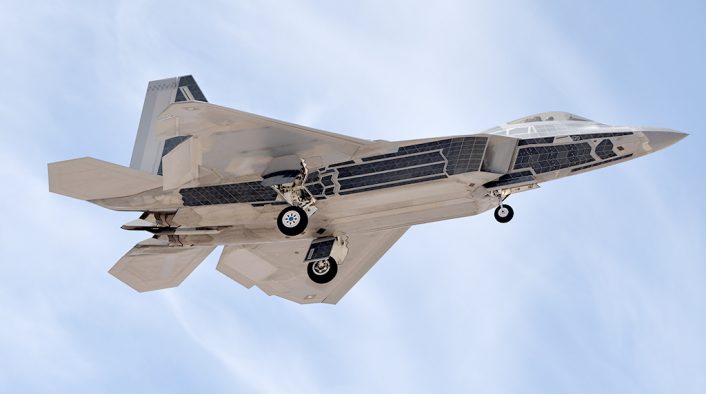
A second F-22, dubbed the “Chrome Raptor,” was spotted in March 2022 at Nellis Air Force Base, Nevada. The newer coating was different than the first one, with smaller, mirror-like tiles have been extensively applied on the nose section, weapons bay doors, fuselage and also inner and outer face of the twin tails.
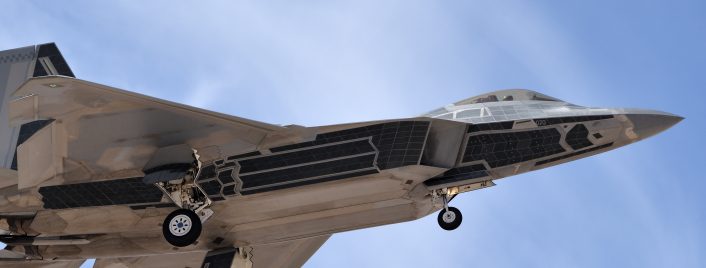
In 2022, also two F-35Cs were spotted with the new coatings, both assigned to VX-9 at Naval Air Weapons Station China Lake. The layout of both coatings appeared similar to the one of the second F-22. The aircraft supported multiple test events on the Point Mugu Sea Range; activities carried out as, operating out of NBVC, were also two F-117s.
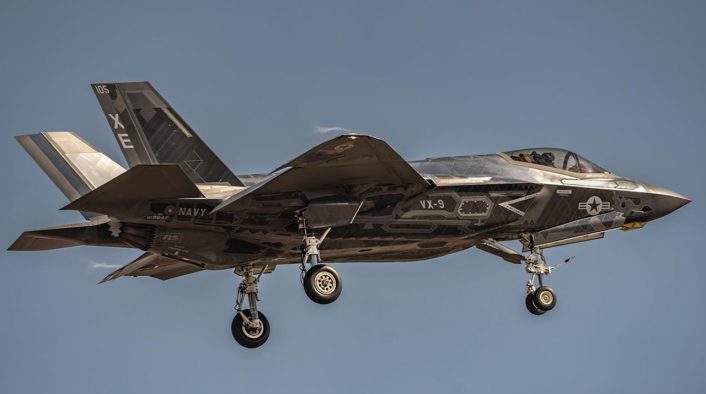
In 2023, an F-35C from Strike Fighter Squadron (VFA) 125, a Fleet Replacement Squadron from NAS Lemoore, California, was photographed during a touch and go on USS Abraham Lincoln (CVN 72). This time, the coating was not applied extensively as in the other cases, but can be seen only on both sides of the vertical tails and wings, while the fuselage has the standard F-35 coating.
